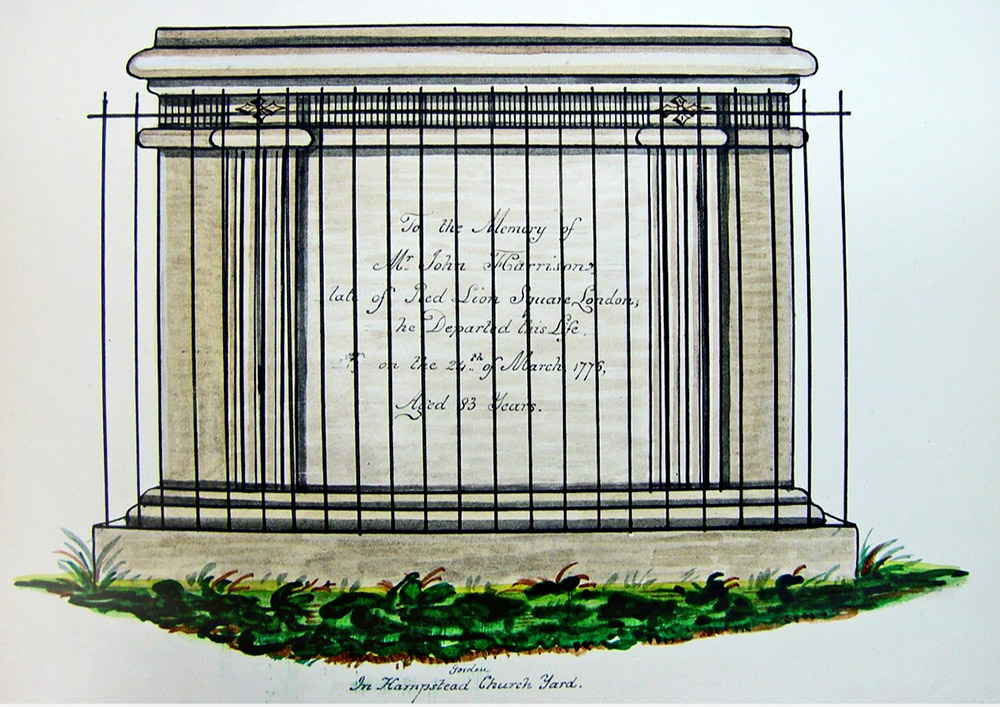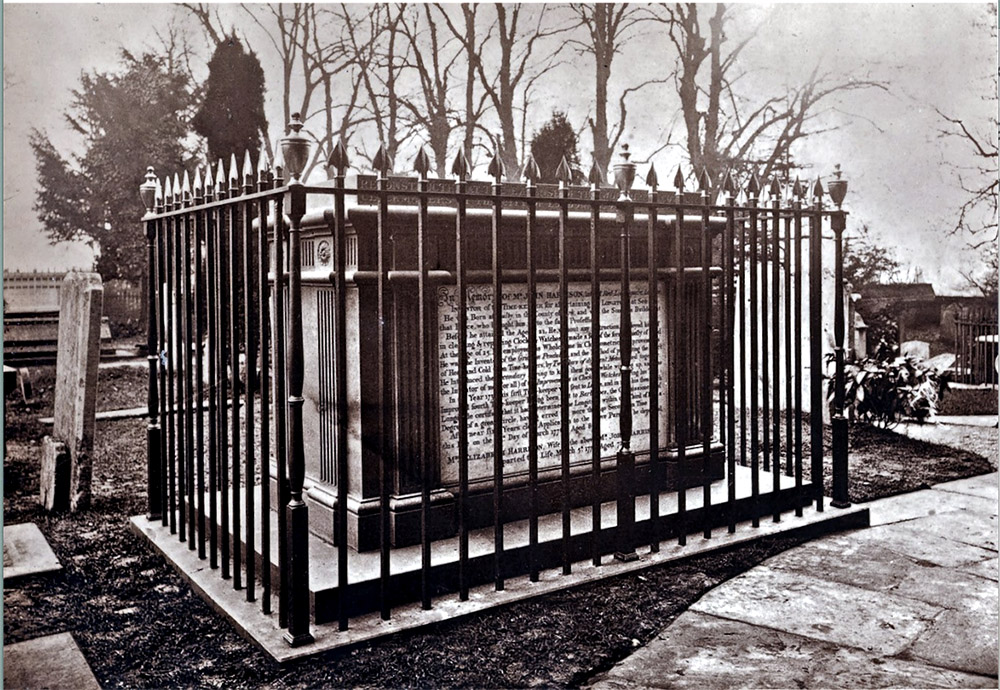Two famous Johns at St John’s
Some years ago our churchyard was best known as the last resting place of the painter John Constable but times change. In 2005 Dava Sobel wrote “Longitude” and in 2007 it was made into a film. Suddenly everyone wanted to see the tomb of our “other” John – John Harrison, Carpenter and Clockmaker, who invented the marine chronometer, making it possible to tell the time at sea. Visitors can read his story on the sides of his tomb, which is situated outside the south door of the church. It’s a splendid tomb.
It’s not the original one.
Have you ever heard of “Grimthorping”? Defined as “to remodel (an ancient building) without proper knowledge or care to retain its original quality and character” it was named after one Baron Grimthorpe who apparently made a less than satisfactory job of certain restorations and the term has been applied since to work that destroyed medieval architecture simply because it wasn’t to the taste of the restorers! *
It seems that this may have been the fate of Harrison’s original tomb. In 1843 a watercolour by Thomas Gosden in his “Monumental drawings of Celebrated Persons” represented the tomb as in apparently perfect condition.

But in 1879 it was deemed to be not so much in need of restoration as in need of complete rebuilding. The Corinthian design in Portland stone with marble panels was replaced by the apparently (going by the watercolour) more elaborate build in Ketton stone with Sicilian marble panels and a plinth of Spinkwell Stone. The new slab on top was raised to allow for an inscription by the Clockmakers referring to the “reconstruction” – I don’t think anyone realised just how drastic that reconstruction had been. In broad terms what we would notice is probably the change in colour, from white to the current sandy yellow. (Remember this is on the south side of the church where it would catch the sun and, because Harrison died long before the extension of 1843 added the transepts, the tomb would have been much more prominent than it is now.) And then there’s the inscription. According to Gosden’s painting the original inscription was much simpler.
The new tomb was unveiled on 16th January 1880 to much acclaim no doubt, though the Ham & High, writing some three years later remarked “in the old churchyard by the southern wall (of the church) is the tomb of John Harrison … this has been renovated in execrable taste by the Clockmakers Company”. (The railings were removed in 1934)

Fortunately the more recent restoration by that same Clockmakers Company has much improved the appearance of the tomb and its legibility. And who knows, if we’d seen the original, we might not agree at all that it had been “grimthorped”!

- The term Grimthorping of course didn’t come into use until the 20th century – the work on St Alban’s which sparked the allusion being done in 1905.
I am indebted to Sir George White Bt, Keeper Emeritus of the Clockmakers’ Museum, who wrote the article published in the Clockmakers’ newsletter of 14th December 2020 which prompted this piece. – and to the Clockmakers for giving me permission to use it.